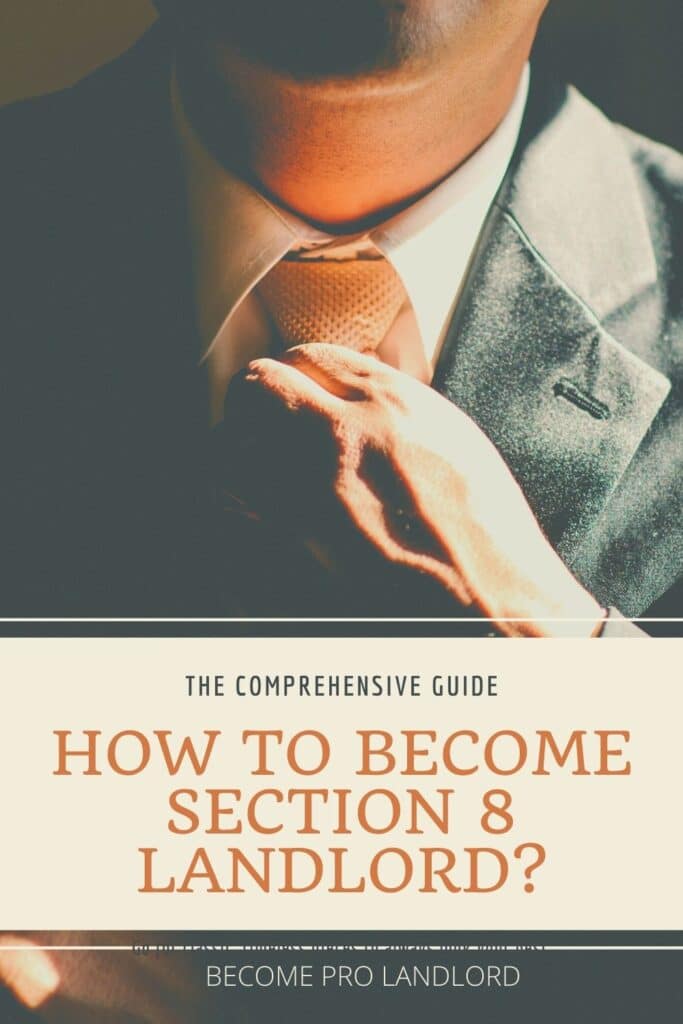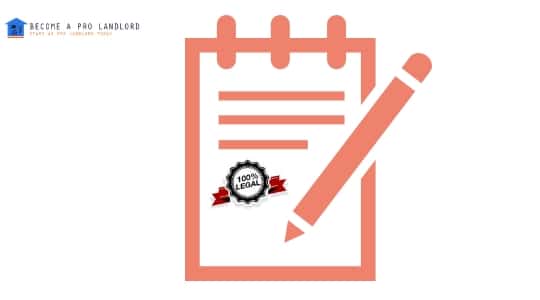A Landlord’s Comprehensive Guide To Section 8 Rentals
The post covid world certainly looks a lot different for landlords and rental investors. Vacant rentals are rampant causing landlords to scratch their heads and their butt against bankruptcy. And even sensing no hope to get out of this anytime soon. For these adverse times, Section 8 Rentals can be your best hedge.
Section 8 is a HUD Rental Assistance Program that provides rental assistance to a low-income group of people. Renting to such low-income group people, known as section 8 tenants; private landlords can secure fair market rents guaranteed by the Federal government.
Section 8 Rentals at a Glance
Housing Choice Voucher Program or Section 8 as it is commonly known, is the U.S. Federal Government initiative to provide rent assistance to low-income families and individuals to afford decent, sanitary, and safe housing. This program comes under the Housing Act of 1937, funded by the U.S HUD Department and started in 1974
The section 8 vouchers are funded by HUD. But, however, it is handled by the Local Public Housing Agencies. The Local PHA is responsible for managing everything related to this Rental Assistance Program.
Who Applies For Section 8 Rental Assistance?

The tenants who have their income below 50% of the country’s median income are eligible for Section 8 Voucher. These low-income group people can apply for housing with the Local PHA and then the PHAs grant them section 8 Vouchers.
However, there is a long waiting list that can go up to three to six years for these section 8 tenants to get approved and even considered by the PHAs. The Local Housing Authorities usually give preference to the local residents of that state who are elderly or have some kind of disability.
Why You Should Consider Investing in Section 8 Rentals?
- Vacancies
- Late Rent Payments
- Rent Delinquencies
- Frequent Tenant Turnovers
Ain`t all these are some of the major concerns for any Landlord?
Renting to Section 8 Tenants provides an opportunity for landlords to avoid these concerns in the first place.
Moreover, having a section 8 rental, you invest in a rental business where there is a very high demand but very little supply. According to Wikipedia, there are approximately 100,000 applicants for every 10,000 spots. Don’t you feel it’s a good enough opportunity to consider investing in Section 8 Rentals?
But if you are thinking about why so few section 8 rentals, then let me tell you. Not every landlord feels comfortable renting to section 8 tenants. Why? You will get to know this before the end of this article.
However, just to kill the curiosity, Section 8 Rentals got a bad reputation which is not the case at all. Keep reading, we are getting there.
But before that, how renting to section 8 tenants make sense for you as a landlord or an investor for that matter?
1. You get Guaranteed Rents
When you rent to Section 8 tenants, landlords get guaranteed rents. Most part of the rent is covered and guaranteed by the PHA. The PHA directly deposits the rent to the landlord’s account without fail.
A tenant who receives a Section 8 voucher is only responsible to cover 30% of their income worth of rent. And the rest will be covered by the Housing Authority.
So technically, a landlord need not worry about getting paid every month, at least for the part covered by the authority. However, the chances of section 8 tenants defaulting on their rent part are also very minimal because they don`t want to lose their voucher at any cost. And not paying their portion of rent can certainly cause them to lose it.
Eviction on Grounds of Non Payment of Rent can cause a Section 8 tenant to lose the housing voucher.
2. You Encounter Fewer Vacancies
As I mentioned, 10,000 spots for 100,000 tenants who are just waiting to get approved for rental assistance. And the PHA is still in quest of landlords who rent to Section 8 tenants. High demand and low supply put your rental on the top of the hotness meter. And being so high in demand, you hardly will occur to vacancies after becoming a section 8 landlord.
3. Fewer Chances of Tenant Turnovers
There is data that shows section 8 tenants have very few tenant turnovers. It is to do with the less number of section 8 rentals available in any area. And the time it can take for a section 8 tenant to improve their low income or when they no longer require a subsidy to rent a place without assistance.
Downsides of Investing in Section 8 Rentals
Enough of the good… Am I right?
There must be some downsides also because of which most landlords stay away from Section 8 Rentals.
1. The Unknown Fear
Most Landlords have an unknown fear of how complicated the process is for getting approved for providing section 8 housing. On the flip side, the process is far from easy. There are simple paperwork and formalities that you complete with your Local Public Housing Authority (PHA).
A Landlord who wishes to rent to section 8 tenants simply has to contact their local PHA. Becoming a section 8 landlord starts by filling out some forms and providing basic information. The details of which are covered in the article itself.
2. Relentless Inspections
When you provide Section 8 Housing, you are required to meet the housing quality standards (HQS). By HQS means your rental property must be up to code in order to qualify as a Section 8 rental and continue to be so. The housing authority keeps a close check and makes yearly inspections to ensure the standards.
However, If the tenant makes a complaint, they can pay a visit anytime to check the violation. And if you have failed to make the repairs, they can stop making the rent payments. With section 8, you just can’t skip making the repairs anyway. So when you are renting to section 8, be ready for relentless inspections if you are a landlord who doesn’t actively maintain your rental unit.
Read: What are Maintainenace Emergencies that require immediate Landlord Attention?
3. You Might Not Get a Security Deposit
Getting a security deposit is a question when you rent to section 8 tenants. Because the PHA doesn’t pay any kind of deposits. Although, you can ask the tenant directly for it. But being related to a low-income group, the tenant may have a hard time paying a deposit. So, it comes under your discretion whether you want to rent to section 8 tenants when you might not get a security deposit.
Read: How much maximum deposit you can charge from a Tenant?
4. No Cover From Damages
The Public Housing Authority will not cover the cost of any damages if whatsoever made by the section 8 tenant to your Property, Period. You neither have a deposit nor the authority is going to cover the cost of damages. Sure, you can chase the tenant for the cost of damages. But considering their low income, it can be a troublesome situation if ever you land up here.
Read: What to do When Security Deposit is not enough to cover Damages?
Though, the damage is the last thing that a section 8 tenant will do to your property. Because if you report the deeds of this tenant to authority, surely the tenant will lose his housing voucher. Moreover, if you make regular inspections and act on your landlord’s responsibilities well in time. Then the chances of occurring damages become little to none.
4. Getting the Rent
Usually, when you rent to a new section 8 tenant, it can take up to 60-90 days to receive the rent payment at first from the PHA. You will get the complete rent for all this period but with a little delay.
It’s not big of a concern but worth mentioning. Those landlords who entirely depend on rent to pay their monthly mortgage should have a little reserve at the beginning to avoid complications.
How To Become a Section 8 Landlord?

Now that you have understood the downsides and still feel section 8 to be worthy as an investment. Then, you must understand how you can become a section 8 landlord.
- Have a safe, sanitary, and a decent rental property that can qualify the Housing Quality Standard (HQS)
- Contact your Local PHA
- Market Your Section 8 Rental
- Screen and Accept the Section 8 Tenant
- Receive Request For Tenancy Approval (RFTA) Document From Tenant and submit to PHA
- PHA reviews your rent offer, inspect your unit and pass the inspection
- Sign a Rental Lease Agreement with the Tenant
- Attach the Section 8 Addendum with the Lease and provide its copy to the PHA
- Sign the HAP Contract with PHA and begin to receive monthly HAP payments from PHA and remainder rent payment from the tenant.
What is Section 8 Housing Quality Standard (HQS)?
The HQS is the minimum health and safety criteria that section 8 landlords must meet at their rental property. It is only after you meet these minimum requirements that a PHA Inspector will approve your property for section 8 Rental.
Before you file an application with PHA for section 8, it is always a good idea that you pre-inspect your property for meeting HQS. If your property meets your area’s Local Housing codes, your property is mostly good to get approval for section 8 as well.
What HUD Inspector will Look For?
In a Nutshell, the HUD Inspector will look for safe, decent, and sanitary housing for section 8 Tenants. The current HQS Regulations require the authority to inspect your property under the light of 13 key performance requirements for housing quality and acceptability criteria.
HUD has specified these requirements for all kinds of rental properties which include single-family homes and multi-family homes. However, HUD has extended guidelines if your rental property is a manufactured home, shared housing, single room occupation, or congregate housing.
Further Reading: HUD Section 8 Requirements For Housing Quality Standards and Acceptability Criteria.
What If the HUD Inspector Did Not Approve Your Rental After Inspection?
The PHAs conduct their housing inspections three times- initial inspection, annual inspection, and special inspection. Your Section 8 Rental must pass all these inspections. And if somehow, your section 8 rental fails to get approved. The PHA requires you to correct deficiencies within a specified deadline which can be between 24 hours to a month depending on the type of issue.
Failure to make corrections and required modifications, the PHA will first abate your rent payments. And later can terminate the HAP Contract, if deficiencies are not corrected even after re inspection.
Market Your Section 8 Rental (Advertising the Vacancy)

Once you feel your section 8 rental is ready and can get approved after the inspection. It’s time that you advertise the vacancy of your section 8 rental. You can either contact the PHA with the intent of renting it to section 8 tenants or you can directly accept rental offers from people having vouchers.
Go Section 8 is one such dedicated marketplace for advertising your section 8 rental vacancy. This website also provides the landlords an estimate of how much fair market rent one can charge in their area. You can try Craigslist as well. Simply mention “Section 8 are Welcome”.
Accepting Direct Rental Offer From Section 8 Tenants
Not everyone qualifies for section 8 assistance. So it becomes very important that you first check whether the prospect has a voucher or not. And if the prospect has a section 8 voucher, carry on with the screening process.
Like you would screen any prospective tenant, you should screen the section 8 tenants. The only exception with section 8 Tenants is skipping the criteria for credit requirements. Though, you must verify that the section 8 tenant has some stable income because the tenant is still responsible for some part of the rent.
Rest, run a thorough background check whether the prospect has no criminal history, eviction, or any such red flag associated with them.
Read: How to do a thorough Tenant Background Check?
Getting Section 8 References From Your Local PHA
The references you get from the Local PHA are mostly pre-screened tenants who are eligible for rental assistance. Though it is still a good idea, that you run down the prospect rental application through your rental criteria. Ensure the prospect meets your criteria before you rent to them.
Getting The RFTA Document
After you find a tenant that meets your expectations, you have this tenant sign an RFTA document with you.
An RFTA document is a document that a section 8 tenant or a family provides a landlord to request for tenancy approval. And, then the landlord submits this RFTA Document to their concerned PHA by filling in the required details. The details required include
- Name of the PHA
- Details of Your Property (No. of Bedrooms, Address of Property)
- Proposed Rent (PHA requires Reasonable Rent)
- Requested Lease Start Date
- The date on which Property is available for Inspection
- Utilities And Appliances Provided By Landlord
- Utilities and Appliances to be Supplied by the tenant
- The certificate that the landlord is not related to the Tenant or family mentioned in RFTA (You cant rent to your family members on section 8)
Once the PHA completes the request for tenancy approval, it notifies both the landlord and the tenant about the approval or disapproval. And if the tenancy is approved, you can sign a lease with the tenant. In the meantime, the PHA will prepare the HAP contract and require you to execute it in a certain time.
Do You Know?
Not Every lease you get is legally enforceable unless it is state-specific. Save yourself from those tough times and get a legally enforceable, state-specific lease from Rocket Lawyer.
How To Determine a Reasonable Rent in Section 8?
PHAs require you to be reasonable with rent if you wish to rent to Section 8 tenants. So when you rent to Section 8 tenants, the maximum rent you will get is that reasonable rent.
HUD offers landlords a maximum rent which is in line with the fair market rents (FMR) of that area. The maximum payment you can get from PHA on section 8 is between 90 to 110 percent of the FMR of that area.
What Utilities and Appliances the Landlord is Required to Provide?
The PHA requires a Landlord to mandatorily provide the tenant on section 8 the appliances and utilities which are required to comply with HQS. These include
- Water
- Gas
- Heat
- An HVAC System
- A Stove and an Oven or a Range
- Water Heater
- Refrigerator
You may provide more appliances and utility but ensure the more you provide, the more responsible you become for keeping them up in the working condition. And if you fail to do so, it will be a breach of the HAP contract.
When you provide the RFTA document to the PHA, you include each and every detail of what appliances you are providing and what utility cost is included in the rent. And the details are then included in the HAP contract which is a legally binding contract.
Remember when the HUD inspector comes for inspection, the appliances and utilities must be functional that you mentioned as your responsibility.
You can`t charge anything in excess of rent from a section 8 tenant. So it is important you factor in the cost of utilities as well with the rent. And if you are providing any extra utilities, get those utilities directly in the name of the tenant. The PHA does provide a utility allowance which will go directly in the name of the tenant.
The HAP Contract

On executing the HAP Contract with PHA, the landlord becomes eligible to receive HUD-approved rent and the amount contributed by the tenant for renting the assisted unit.
The HAP Contract is the Housing Assistance Payment Contract executed between two parties, the landlord and the PHA. It is only after receiving the RTFA document and determining the project (property) meets all the program standards, the PHA executes the HAP contract with the Landlord.
This contract consists of three parts
- Part A For Contract Information
- Part B has Contract Body
- Part C has Tenancy Addendum
On the contract execution, the landlord enters into the legal obligation with the HUD to provide a habitable dwelling to the participant under the Housing Choice Voucher Program. And in turn, the HUD will send HAP payments monthly to the landlord. The Landlord has got a maximum of 60 days to execute the HAP contract with PHA after the lease term begins.
Can Landlord Raise Rent on Section 8?
Landlords can raise the rent for section 8 tenants by submitting a rent increase request with the PHA. You are required to submit the request 60 days before you actually want to raise the rent. The PHA will determine whether the request for rent is reasonable or not. And if they found it reasonable enough, they send a letter to the tenant a minimum of 30 days before the rent increase has to happen.
If the PHA disapproves of the rent raise, you have an option to either terminate the contract or continue to rent on the same amount. Raising the rent is not possible until the HAP contract and lease are in place, and unless there are no special circumstances that require PHA`s attention.
Read: The Art of Raising Rent (Raising Rent and still my tenants want to renew the lease)
What are Section 8 Landlord Responsibilities?

PHA has set certain guidelines for section 8 landlords.
- The First and Foremost Guideline for Section 8 Landlord is to maintain a safe and habitable place for the voucher holders.
- A Landlord must act on his responsibility to make repairs if needed that too as fast as possible in human capacity.
- Providing the utility and appliances that are your responsibility.
- Collect only the Tenant`s portion of rent from the tenant and will not ask for any other money for providing other services or allowing subletting.
- Notify about rent increase well within the time.
- Adhere to lease terms of the Tenancy Addendum.
- Notify the PHA of any concerning issues related to renting to the Voucher holding tenants. It can be any violation, criminal activity, abandonment, or even tenant`s death and if your property’s ownership is changing hands.
Bottom Line
That’s it for the Section 8 Rentals. After reading the above information, I’m certain that if you are considering becoming a section 8 landlord. You can do it with ease. And still, if you occur with any issue regarding section 8 rentals, feel free to comment down below.
“Give Section 8 a try, it is a good rental investment for times of uncertainty.”
Found this article helpful, then you may sign up for my weekly newsletter where I share information for the DIY Landlords out there! Also, join our private Facebook community of Landlords and Rental Investors.



